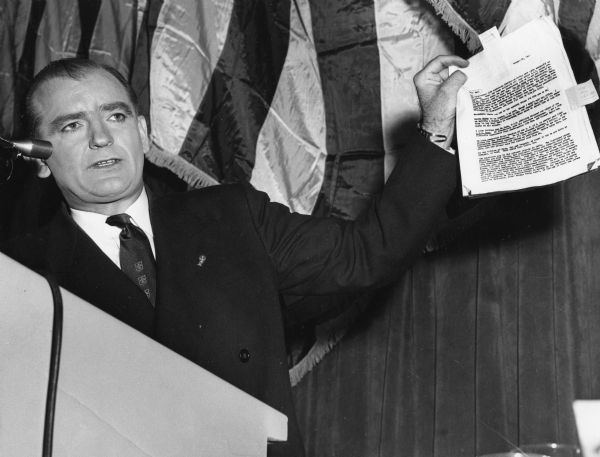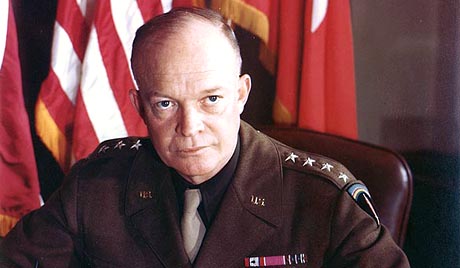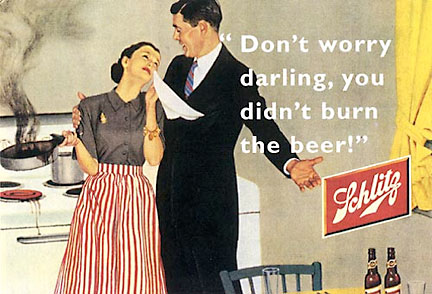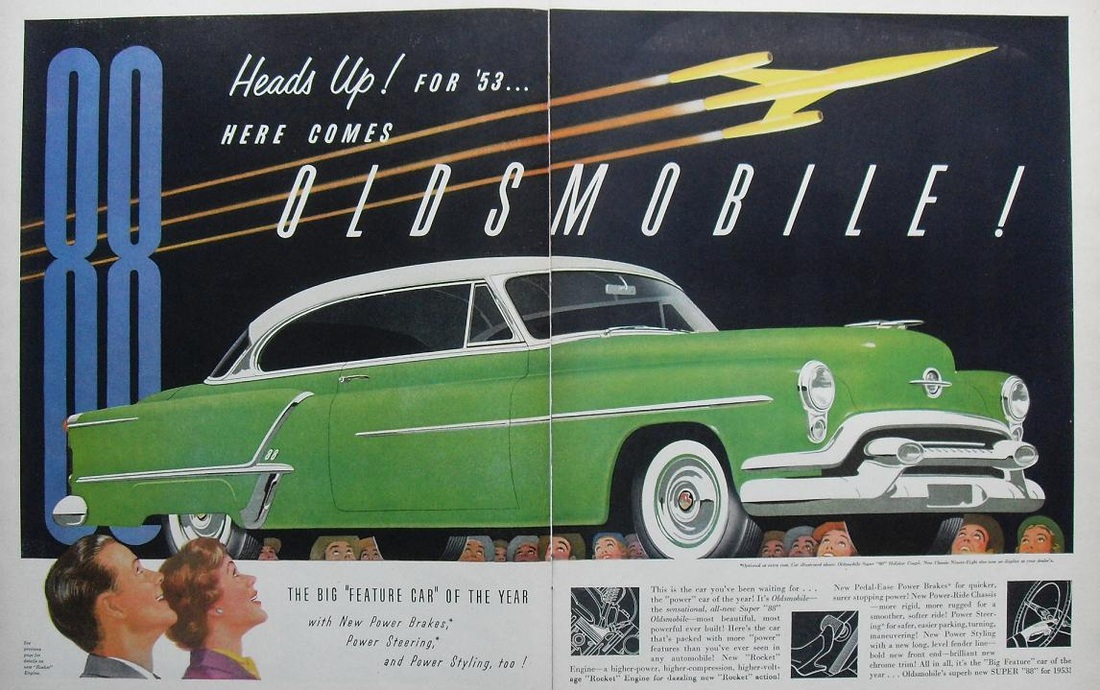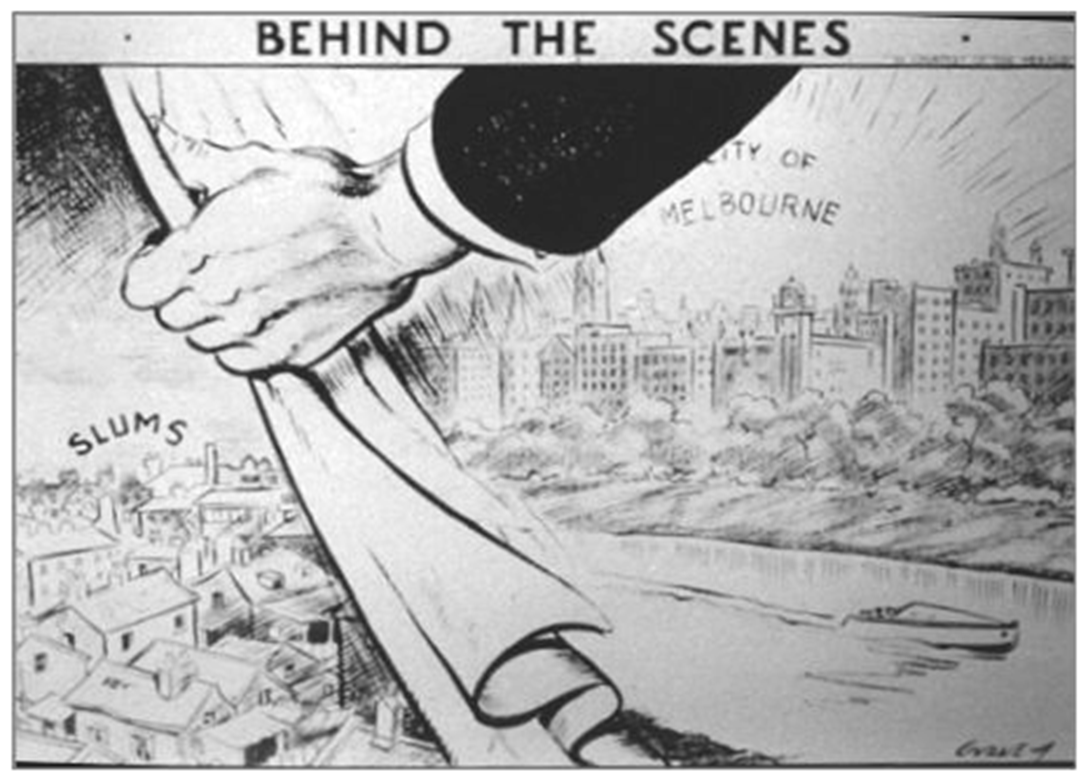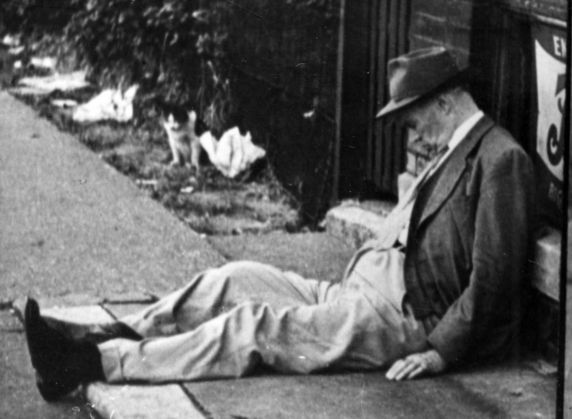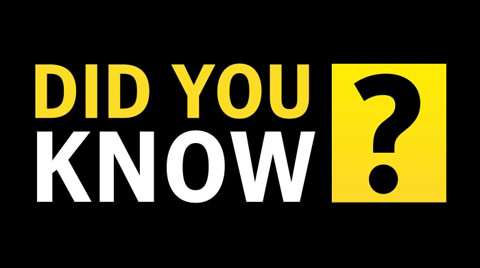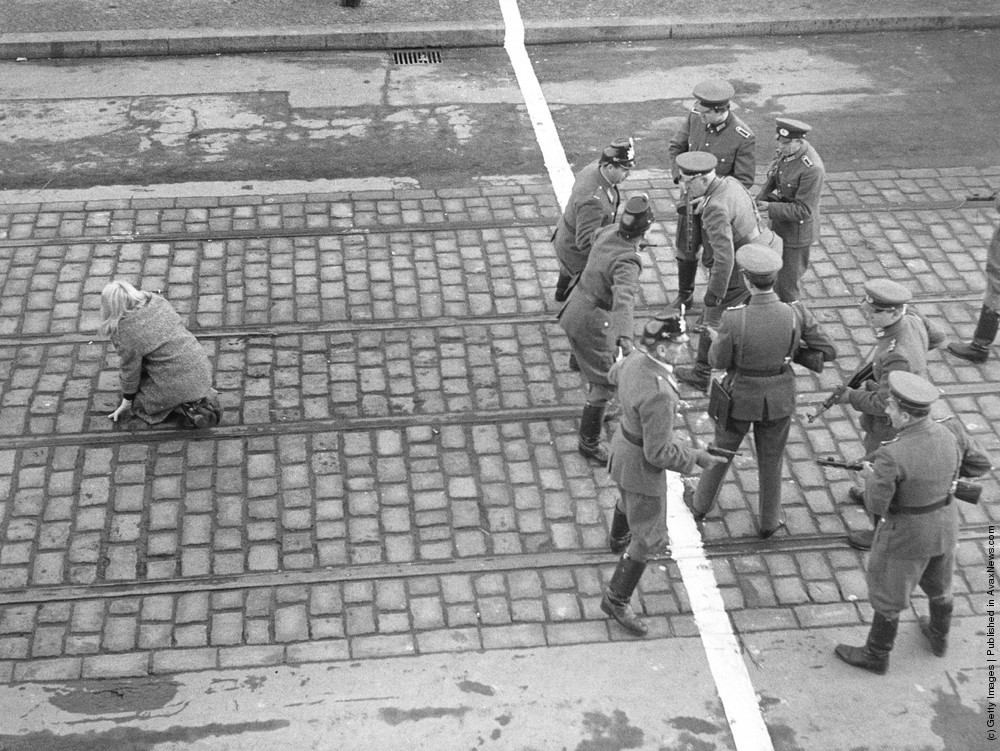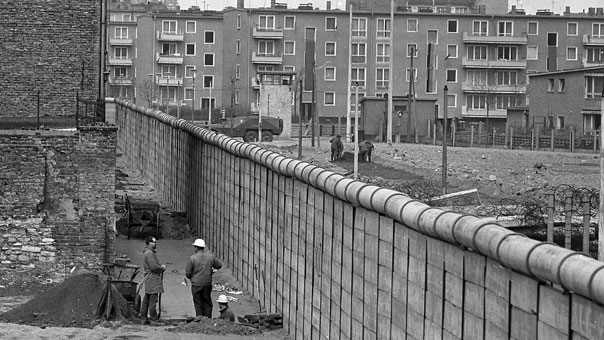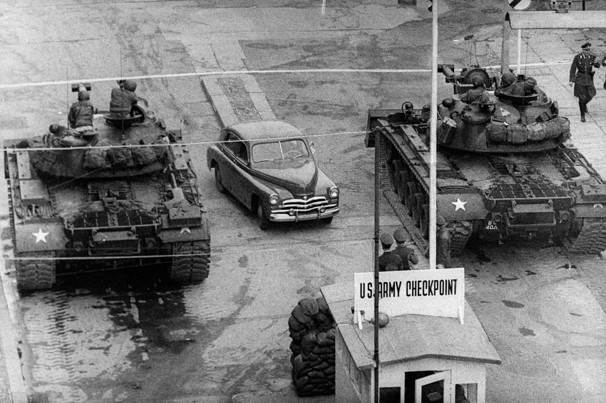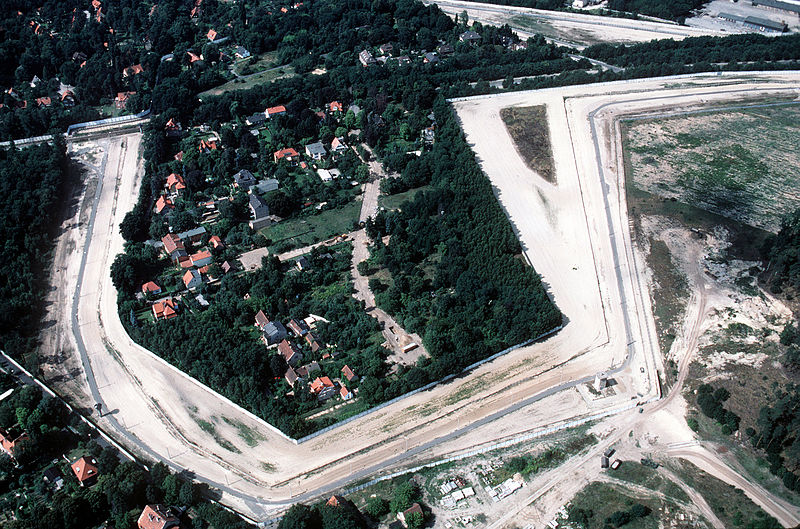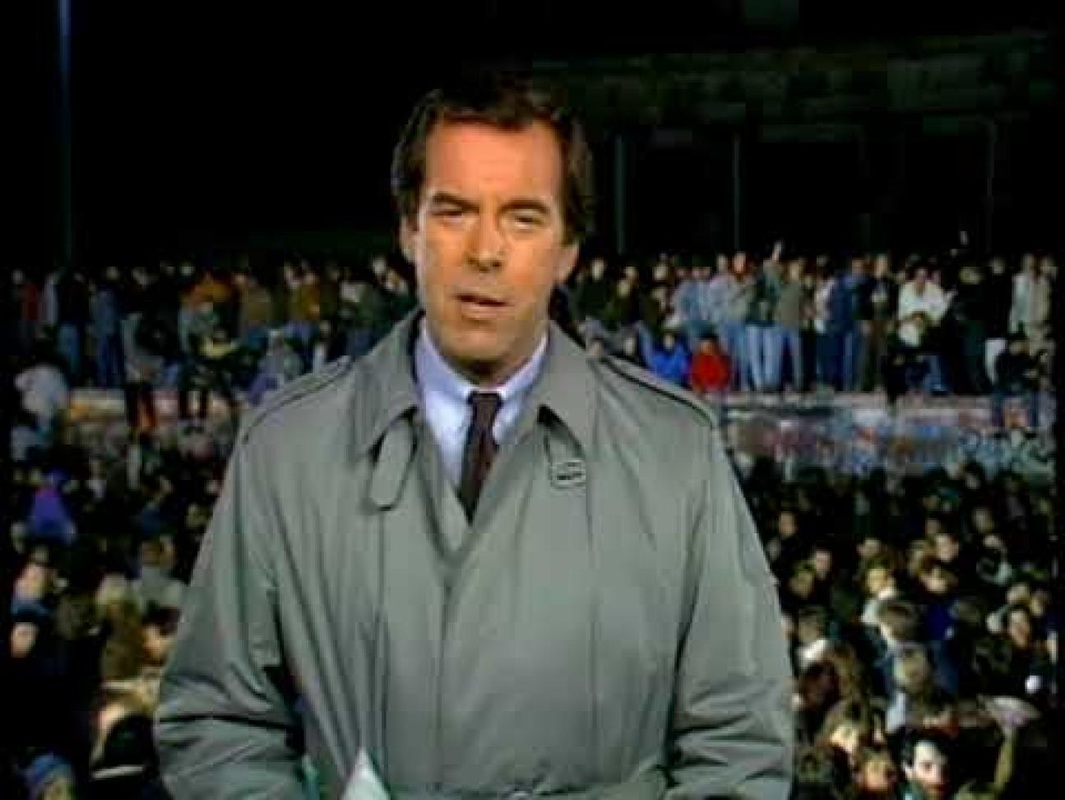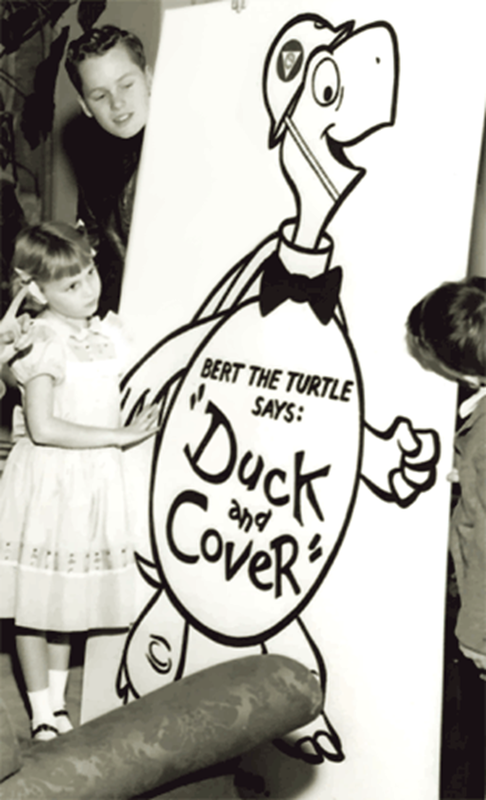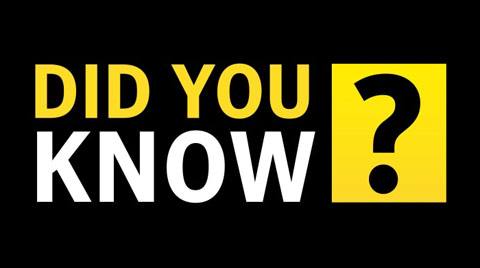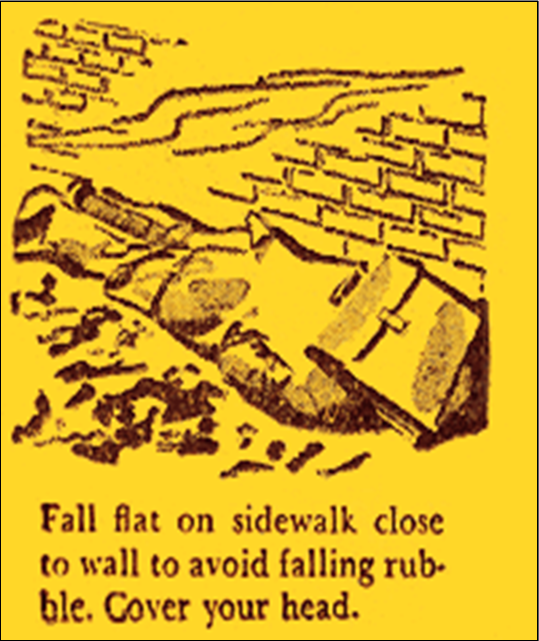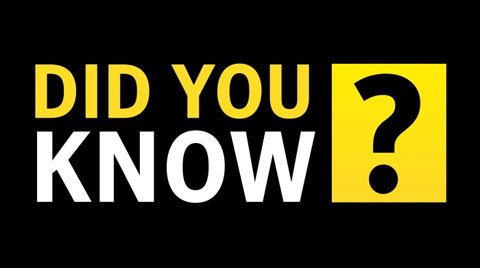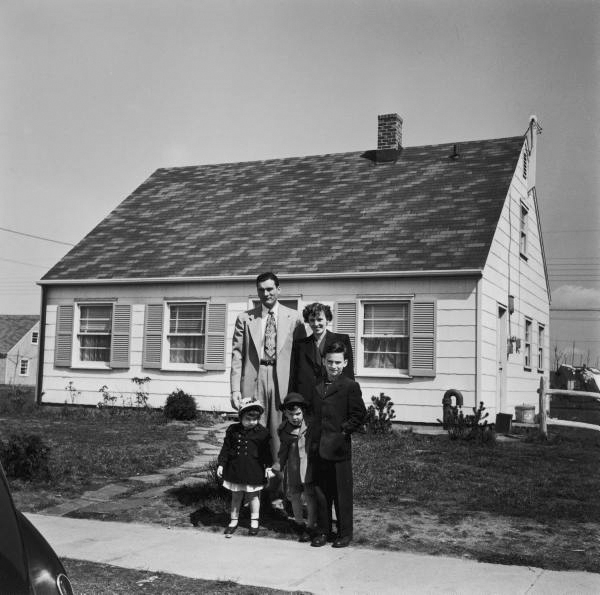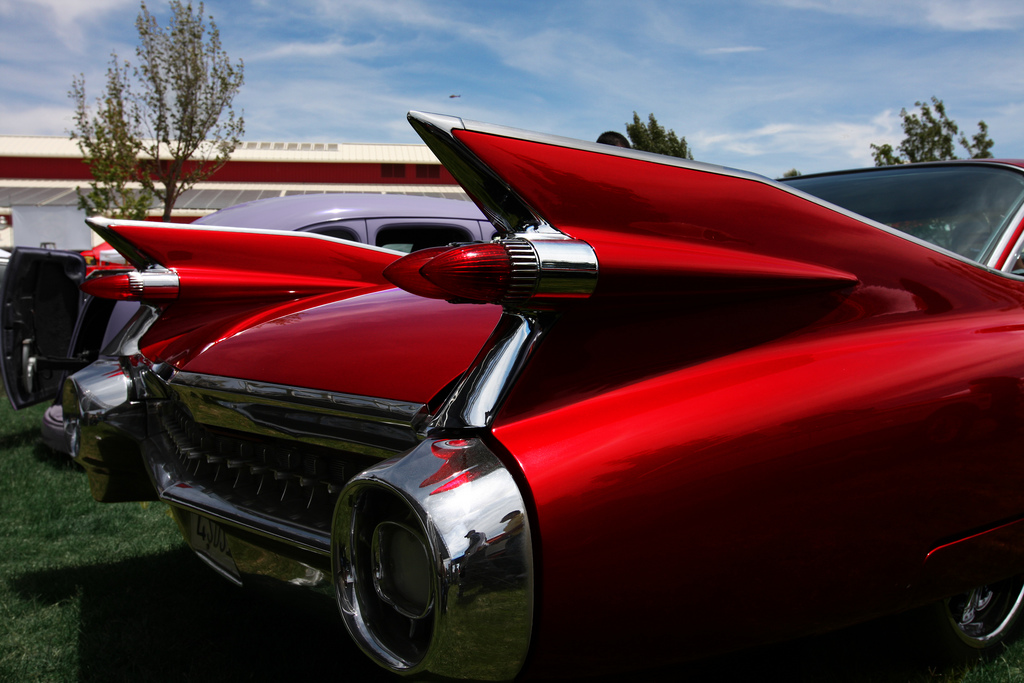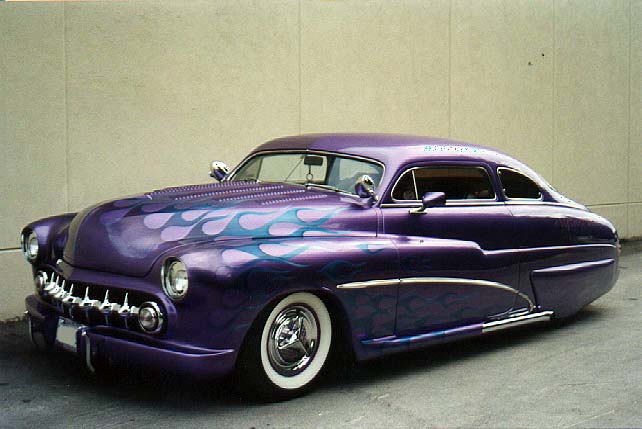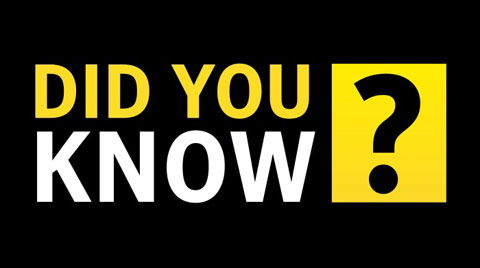Scramblin' thru... the Fabulous '50s
The American Dream is Born...
The "Fabulous" Fifties! What a deceptively delicious decade of decadence in American history. It was America's second "golden turd" after the one it laid during the "Roaring" Twenties. America came out of the 1940s as one of the world's two emerging "Super Powers" (stupid Russians...) and saw a ballooning economy for the first time in 30 years. This harkened a return to the 1920s-styled consumer society built on credit, as well as a "baby boom" thanks to our boys in uniform who went to college and settled in suburban America. (Picture Leave it to Beaver and white picket fences outlining meticulously groomed lawns.)
Most of the internal conflicts that developed in earlier decades (like women's rights and civil rights) tried to resurface during the "Fabulous" Fifties. These were promptly swept under the national rug as Americans nestled back into their comfortable and conservative ways of life after the liberalism and radicalism of the 1930s and 1940s jolted them from their protective and peaceful slumber. Just as mass-consumerism of the 1920s resulted in the Great Depression, suppressing social problems during the 1950s sparked the Civil Rights Movement of the 1960s. Once again, America looked polished on the surface by keeping its dirty laundry tucked away and out of site. The World's First FrenemiesThe U.S. wasn't the only emerging "Super Power". Its rival was the U.S.S.R. (Union of Soviet Socialist Republics).
Their struggle became the "Cold War" (1945-1991) because it did not lead to a direct war. The Cold War was waged by means of economic pressure, selective aid, intimidation, diplomatic maneuvering, propaganda, assassination, low-intensity military operations, and full-scale proxy war (where two powers use third parties as a substitute for fighting directly). World War II began on September 1, 1939 with the dual Nazi and Soviet invasion of Poland and ended on September 2, 1945 with Japan's surrender; 72 million died during the war (25 million military and 47 million civilians). Despite having opposing economic and philosophical ideologies, the U.S. and U.S.S.R. put aside their differences and played nice for the Allies. Of all the nations that participated in WWII, the human cost fell heaviest on the Russians, for which the official total, military and civilian, is given as over 20 million killed. (But that happens when your military leaders order the shooting of any soldiers that attempt to retreat during battle.) The U.S. sustained 405,399 deaths (291,557 KIA) and 671,846 wounded for a total of 1,077,245 casualties. In the end, Germany was divided into four military occupation zones, forming an East and West Germany. The East was Communist while the West was democratic. The city of Berlin, located in the East, was also split into East Berlin (Communist) and West Berlin (democratic). Baby, It's Cold Outside...In the first "shot" of the Cold War, and as both sides began their posturing, the U.S.S.R. imposed a ban in 1948 on overland traffic between Berlin and West Germany. (The Soviets had always believed that because they had been the first to reach Berlin during WWII, the city belonged under Soviet control in the East.) In response, the U.S. began an airlift to supply West Berlin with food and fuel for almost 11 months. The Soviets lifted the ban in May 1949 and divided Berlin with the Berlin Wall in 1961. (The wall was torn down in 1989.)
Because of the Nazi invasion of the U.S.S.R. during WWII, the Soviets wanted to create a "buffer" zone between it and Europe. (It makes sense... Napoleon attacked them in 1814, with similar results.) The Soviets did this through satellite nations, which were countries they exerted heavy influence over both politically and economically. This formed what became known as the "Iron Curtain". Very quickly, the world began picking sides. You were either with the Soviets, or you were with the Americans. America was using its robust economy to lure countries to its sandbox via the European Recovery Program (a.k.a. the Marshall Plan), an American program of financial assistance that helped rebuild European nations devastated by WWII. The Soviets lured countries to their side through brute intimidation and invasion. (Potato, Patato...)
U.S. President Harry S. Truman saw Soviet expansion under Joseph Stalin as a threat to Europe. His "Truman Doctrine" promised aid to countries facing threats from Communism. This set the stage for frequent American intervention around the world as keeping Communism from spreading soon dominated U.S. foreign policy.
In 1947, the Truman Doctrine was put to the test during a conflict centered in Greece where a Communist-led resistance movement threatened to overthrow the Greek monarchical government. (The U.S. could care less about what government the Greeks wanted... so long as it wasn't Communist.) Congress sent $400 million to support anti-Communist forces in Greece and Turkey. (Turkey was undergoing similar problems, and, well, since we were in the neighborhood...) By giving aid, the U.S. signaled that it would stick its nose into the affairs of those countries facing Communist threats. (Is there any wonder why we are trillions of dollars in debt today?) In 1949, the U.S. and 11 other countries went all "Three Musketeers" and formed the North Atlantic Treaty Organization (NATO), a mutual defense pact. Members of NATO pledged that "An attack on one would be an attack on all." Not to be outdone, Stalin responded by uniting the economies of Eastern Europe under the Council for Mutual Economic Assistance (COMECON, which wasn't as "catchy" of a name). Late in 1949, Americans learned that the Soviets had successfully exploded their own atomic bomb –which meant we weren't so "special" anymore. Finally, in February 1950, Stalin signed an alliance with China, who had become a Communist country in 1949. Soon, things escalated quickly... and really got out of hand fast.
Korea: Not too Cold; Not too HotJapan had occupied Korea during World War II. After Japan's defeat, Korea was divided along the 38th parallel into the Democratic People's Republic of Korea (which was Communist) in the north and the U.S.-backed Republic of Korea (which was democratic) in the south. (Do you see why using the term "republic" can be deceiving?) After June 1949, when the U.S. Army withdrew, South Korea was vulnerable. A year later, North Korea invaded South Korea, beginning the Korean War (1950-1953). Truman reacted quickly. He committed U.S. forces to Korea, sent General Douglas MacArthur to command them, and asked the United Nations to protect South Korea from conquest.
MacArthur drove the North Koreans back to the dividing line. Truman then ordered American troops to cross the 38th parallel and press on to the Chinese border. China responded in November 1950 with a huge counterattack that decimated U.S. armies. MacArthur demanded permission to invade mainland China, which Truman rejected. (The U.S. didn't want MacArthur to nuke China since the Soviets also had itchy trigger fingers.) In 1951, Truman fired him for insubordination. By then, the combatants had separated near the 38th parallel. The Korean War did not officially end until 1953, when President Dwight Eisenhower imposed a shaky ceasefire. The Korean War brought about rearmament, hiked the U.S. military budget, and increased fears of Communist aggression both abroad and at home. Of the 5.7 million U.S. soldiers involved in this "Forgotten War", 157,530 became casualties (including 54,246 deaths). 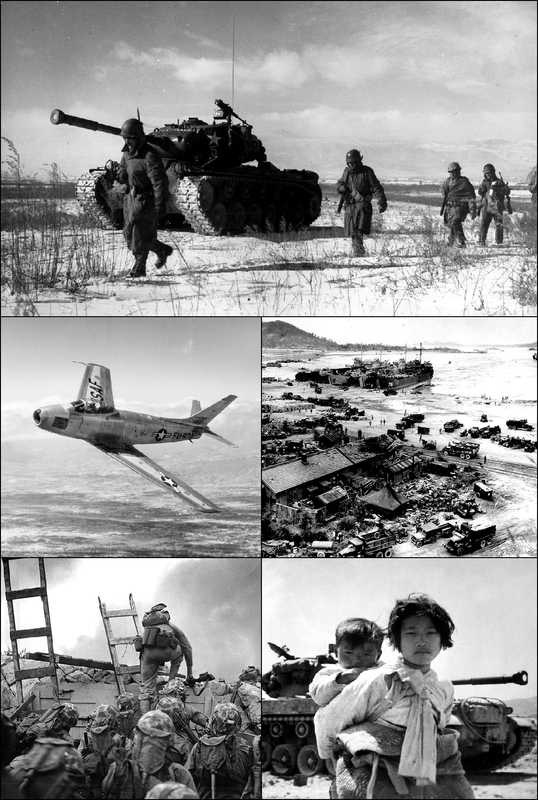
Clockwise from the top: Marines battled both the enemy and the elements (temps dipped as low as -100 F with wind chill) during their retreat from the Chosin Reservoir; UN troops land at Incheon harbor to begin the push to retake South Korea; Korean refugees in front of an American M26 Pershing tank; Marines landing at Incheon; American F-86 Sabre fighter aircraft.
America Grows ColderAs the Cold War intensified, it affected life in America. And there's not much America likes more than a good ol' fashioned witch hunt. Having perfected our skills in Salem during the late 1600s, we turned our sites on Communists. Suspicion about Communist infiltration of the U.S. Government forced President Truman to act. Programs were formed to investigate government workers and fire those who were disloyal.
The Communist Party had reached the peak of its strength in the U.S. during WWII, when it claimed 80,000 members. Some of these had worked for the government, handled classified material, or been part of spy networks. Although Communist Party membership had fallen to under 30,000 by the 1950s, suspicion about disloyalty had grown. Attention focused on two big-time court trials. In August 1948, Time magazine editor Whittaker Chambers, a former Communist, accused former State Department official Alger Hiss of being a Communist... and a spy. Hiss sued Chambers for slander, but Hiss was convicted of perjury in 1950 and jailed. In 1951, Julius and Ethel Rosenberg were convicted of espionage for stealing atomic secrets. They were executed two years later. (The U.S. Government doesn't have a sense of humor when it comes to treason.) Recent evidence still supports the convictions of Alger Hiss and Julius Rosenberg (not so much Ethel... after all, a name like Ethel conjures up images of grandmas crocheting sweaters and not stealing nuclear no-nos). To further root out Communists in the U.S., Congress formed the House Un-American Activities Committee (HUAC). The entertainment industry was targeted. Film directors, writers, and actors suspected of being Communists were blacklisted. A Republican Senator from Wisconsin named Joseph McCarthy began the Red Scare of the 1950s (similar to the Red Scare of the 1920s). McCarthy said he had a list of Communists who worked in the State Department. Although his accusations were labeled "a hoax", he won a following by branding the Democrats as a "party of treason". (The term "McCarthyism" means false charges of disloyalty.) McCarthy's influence continued until the Army-McCarthy hearings of 1954, when the Senate investigated McCarthy's enquiry into the U.S. Army. The Senate censured him for abusing his colleagues, and his career collapsed. But fears continued. Books were banned; teachers, academics, civil servants, and entertainers lost jobs; and unwarranted attacks ruined lives. McCarthyism left permanent scars.
I Like Ike (but I Love Lucy)!The Cold War played a role in the Election of 1952 between Republican Dwight Eisenhower and Democrat Adlai Stevenson. Many voters feared Soviet expansionism, nuclear bombs, and more conflicts like Korea. Eisenhower's running mate, former HUAAC member Richard M. Nixon, claimed that a Democratic victory would result in "more atomic spies". (And as history would go on to show us, we should trust every single word uttered by Nixon...) Eisenhower's popularity from World War II led to two terms as President. (He commanded that little invasion we call D-Day... perhaps you've you heard of it?)
Once in office, Eisenhower ended the Korean War... and promptly cut the Federal budget and defense spending. When Stalin died in March 1953, the U.S. and the U.S.S.R. had an chance to ease tensions. Instead, the Soviets exploded a hydrogen bomb, which didn't help at all.
As a result, Eisenhower (a.k.a. "Ike") turned to forceful efforts to defeat Communism... in other words, he took off the gloves and relied on his Secretary of State John Foster Dulles. Dulles was no sissy. He hated Truman's "containment" ideas and shifted American diplomacy to that of massive retaliation and brinksmanship. (Brinkmanship is never backing down even at the risk of war.) Dulles negotiated pacts around the world, committing the U.S. to the defense of 43 nations. (Essentially, the U.S. started sending out friend requests on Facebook to everyone that had an account... you know the kind.) This, of course, resulted in the U.S. finding itself involved in Vietnam and the Middle East. In Vietnam, Communist Ho Chi Minh pushed for his country's independence from France. The Truman Administration had aided France, but in 1954, the French were defeated. An international peace conference in Geneva divided Vietnam at the 17th parallel (North: Communist; South: democratic). The U.S. refused to sign the Geneva Accords, which it believed gave too much to the Communists. Instead, the U.S. sent economic aid and military "advisers" to South Vietnam from 1954-1961. Although Eisenhower feared further involvement in Vietnam, he supported what was called the "Domino Theory": If Vietnam fell to Communism, all of Southeast Asia might follow. In the Middle East, the U.S. promised a loan to Egypt's ruler Gamal Abdel Nasser to build the Aswan Dam on the Nile River. (Yea, it's random, but, remember, we want everyone to like us, so, if you need money to build an obscure damn, we're more than happy to cut you a check!) Of course, this brought the U.S. into contact with some pretty seedy people who did questionable things. (But, when they're our seedy people who did questionable things, then it's OK...) When Nasser purchased weapons from Communist Czechoslovakia... and not from the U.S.... the U.S. canceled the loan. Nasser retaliated in July 1956 by seizing the British/French-owned Suez Canal, an artificial waterway across the Isthmus of Suez in Egypt. Britain, France, and Israel responded by invading Egypt. This prompted the Soviets to puff their chests and threaten to attack Britain and France. The U.S. warned that it would not tolerate such action. Direct confrontation with the Soviets was avoided when the UN imposed a cease-fire.
In reaction to the "Suez Crisis", the U.S. announced a new policy, the "Eisenhower Doctrine". The Eisenhower Doctrine stated that the U.S. would intervene (when necessary) to protect the Middle East from Communism.
Meanwhile, in the U.S.S.R., Stalin's successor Nikita Khrushchev was a busy little beaver, hopping from project to project in order to keep the Cold War alive. He extended Soviet influence by establishing relations with India and other nations that were not aligned with either side in the Cold War. (He started picking up America's scraps.) He created the Warsaw Pact, a military alliance of 7 European Communist nations. (It also wasn't as cool as NATO.) He used force in Hungary (that resulted in the death of 30,000 Hungarian protestors) and pressure in Poland to ensure continued Soviet control. He increased Soviet power by developing an H-bomb in 1953, which instantly kept U.S. military superiority "in check". Then the Soviets launched the first satellite (Sputnik I) in 1957 and followed this up by forming an alliance with Cuba (on our side of the pond!) after Fidel Castro led a revolution there in 1959. At the end of Ike's second term, the Cold War had a firm grasp of the American foreign policy. U.S. efforts around the world to stop Communism sometimes caused anger. When Eisenhower left office, he warned against "unwarranted influence ... by the military-industrial complex." During the 1950s, war generated the U.S. over $80 billion a year. (In short, war = $$$. )Ike knew that the U.S. was going to be dragged into the Vietnam War as a result of the "profitability" of war.
With the nuclear race heating up like John Stockton on NBA Jam, tensions between the U.S. and the U.S.S.R. continued to deteriorate as the decade unfolded, setting the stage for future confrontations during the '60s, '70s, and '80s. A World of "Plenty"The 1950s are noted in U.S. history as a time of compliance, conformity... and rebellion. The domestic scene saw two-parent families (with father at work and mother at home) promoted in popular TV shows like Leave it to Beaver. Social undercurrents subverting this view were seen in beat poetry, rock 'n' roll music, and in movies like Rebel Without a Cause starring teen heartthrob James Dean. (Dean, Elvis Presley, and Marilyn Monroe are considered "Fifties" icons. You know this if you've ever eaten at Johnny Rockets. I like the dancing unless I can see my order at the counter getting cold while the wait staff does the Chalypso or the Stroll.)
Just like with the 1920s, pop culture and mass media were again "kings" of the 1950s. Roughly 60% of Americans fell under the category of the middle class. New highways and inexpensive cars ($2,000) and cheap gas (20 cents/gallon) made commuting to work possible. This, in turn, allowed people to live in the suburbs. Fast-food (like McDonald's) fueled this "go-go-go" mentality. New fashions, slang words, music, and cars prompted many to dub it the "Fabulous" Fifties. But, as was the case with the "Roaring" Twenties, prosperity failed to reach everyone. The Second Golden TurdThe widespread prosperity of postwar America didn't exactly "trickle-down". Some 40-50 million Americans were excluded from wealth and became socially invisible. At the end of the 1950s, nearly one-fifth of the population lived below the poverty line. The poor included many groups: the uninsured elderly, migrant farm workers, families in the Appalachian hills, and residents of inner-city slums.
When many middle-class Americans left the city for the suburbs, they left behind urban areas with antiquated schools and deteriorating public facilities. (This was nicknamed "white flight".) They also left behind high concentrations of poor people, which meant a dwindling tax base. Federal housing programs and urban renewal efforts often did little more than move poor people from one ghetto to another. Some critics of urban renewal claimed it was really urban removal. As one urban planner noted, "We turned our cities into doughnuts with all the dough [money] around the center and nothing in the middle." While poverty grew rapidly in the decaying inner cities, many suburban Americans remained unaware of it. Some refused to believe poverty could exist in Earth's richest nation. And the urban poor had few advocates to call attention to their plight. Many politicians and economists advanced the belief that poverty in America was on the road to extinction. An article in Fortune magazine declared in 1960 that poverty in the U.S. "would be eliminated by the end of the decade". (Good call, print media! No wonder you're going extinct!)
From the end of WWII until 1960, nearly five million African-Americans continued their exodus from the rural South to Northern cities. (By 1950, one-third of blacks lived outside of the South.) At the same time, the black population moved within the South. By 1960, almost three out of five Southern blacks lived in towns and cities, concentrated in large metropolitan areas like Atlanta and Washington, D.C. Large-scale migration to cities caused rising ambitions and expectations for equality. This soon became evident in the Civil Rights Movement. The "other" America could no longer be ignored.
Bring on the Hippies!Post-WWII prosperity brought comfort and social mobility to many Americans. Those who had grown up during the Great Depression appreciated the "good life" of the 1950s. Prosperity, however, eluded many citizens. Signs of change around 1959 included the growing role of youth, the civil rights protests, and the simmering of dissent. It was clear that the 1960s would have to pay the price for the "sins" of the "Fabulous" Fifties.
|
The Cold War had deep roots, going back to the Russian Revolution of 1917, when, after the Bolshevik victory, the U.S. (along with Britain, France, and Japan) sent troops to Russia to support the anti-Communists. During WWII, the two were allied, but they disagreed on everything. After the war, relations deteriorated. They had different ideologies and mistrusted each other. In the end, the U.S. won. That's what matters...
During the 1950s, the city of Berlin was divided by an imaginary line. In 1961, it was divided physically by the Berlin Wall, a fortified wall surrounding West Berlin that was maintained by East Germany until 1989. At the end of WWII, the city of Berlin was partitioned into East Berlin and West Berlin. Between 1949 (when East Germany was established) and the middle of 1961, as many as 2.7 million people fled East Germany... more than half of them through West Berlin. Many East Germans left hoping to find better economic opportunities in the West.
Of course, when you're trying to convince people to "join your side", it looks bad when people are seen fleeing from it. So, in 1961, the East German Government decided to stop this flight to the West, which was depleting the country's labor force. During the night of August 13, 1961, East German soldiers surrounded West Berlin with temporary fortifications that were replaced by a concrete wall, 12 feet high and 103 miles long, of which 28 miles lay between the two sides of the city. Where a wall was not possible, buildings were bricked-up. The only openings in the wall were two closely guarded crossing points. Although the East announced that the wall was needed to prevent military aggression and political interference from West Germany, the East German Government built tank traps and ditches along the eastern side of the wall, suggesting that it was constructed to keep East German citizens in. From 1961-1989, a few East Germans managed to escape to West Berlin, but at least 80 people died trying to cross the border. In the summer of 1989, the Berlin Wall became pointless when Hungary allowed East Germans to pass through Hungary on their way to Austria and West Germany. In the fall of that year, the East German regime was on the verge of collapse, and on November 9th, enthusiastic citizens began demolishing entire sections of the wall without interference from government officials or troops. East Germany eventually participated in the removal of the Berlin Wall and reunited with West Germany in 1990 as one nation, the Federal Republic of Germany (which is the only Germany students today have ever known). The Berlin Wall is now commemorated by a few remaining sections and a museum near the site of the most famous crossing point, "Checkpoint Charlie". Twice in the 1950s, MLB's Cincinnati Reds, fearing that their club nickname would associate them with the threat of Communism, officially changed the name of the team to the Cincinnati Redlegs. From 1956-1960, the club's logo was altered to remove the word "REDS" from the inside of the "wishbone C" symbol and from their uniforms. Despite the continued use of the changed logo, the name "Cincinnati Reds" was restored in 1961.
The North American Aerospace Defense Command (or NORAD) was activated in 1957 to provide an integrated command for the air defense of the U.S. and Canada. Their job is to detect and track any missile attacks on the U.S. and Canada. NORAD is housed in a bombproof site located within the interior of Cheyenne Mountain near Colorado Springs, Colorado. NORAD monitors early warning systems, processes information, and relates concerns to the U.S. Strategic Command.
Of course, in addition to keeping missiles from raining down upon us, NORAD also tracks Santa Claus. Yup. It's comforting to know that they take time on December 24th to track a fictitious fat guy in a flying sleigh. But, NORAD has been tracking his journey for 50 years. It all started when a Colorado department store printed the wrong phone number for a "Santa hotline" on a promotional flyer, and CONAD (NORAD's predecessor) was flooded with calls from children asking to speak to Santa. Rather than disappoint them, the staff took it upon themselves to track Santa on their radar. (Yes, taxpayer dollars hard at work!) Nowadays, kids can keep tabs on Santa themselves by visitng NORAD's website, www.noradsanta.org. The U.S. monopoly on nuclear weapons was broken in 1949 when the Soviet Union exploded its first nuclear device. Many in U.S. Government and public now felt the U.S. was more vulnerable than ever before. What to do?! What to do?! Ah, ha! Duck and Cover!
In 1951, Duck and Cover was produced for schools. It featured a jovial turtle named Bert who is frequently (for some reason) attacked by a dynamite-wielding monkey. Luckily, Bert knows what to do – "Duck and Cover!" Bert is kind enough to then explain how to survive an atomic blast... or a dynamite-wielding monkey – you know – whatever comes first). These exercises became part of Civil Defense drills that every American practiced. It was thought that the main dangers were heat and blast damage; radioactive fallout was not identified until 1954 (which didn't really help the people of Japan). Modern audiences will see parallels between this film and the tornado drills they used to do in school. (In both cases – atomic attack or tornado –crouching under desks and covering the back of your head is 100% guaranteed, without a doubt, to NOT save your life...) The following pictures are from the "Survival Under Atomic Attack" booklet by the U.S. Government and contain tips on how to survive. Pay close attention!
Dwight D. Eisenhower was often called by the
nickname "Ike". No one knows for sure where or why this particular nickname developed other than that it sounds like the first syllable of "Eisenhower". Other suggestions state that "Ike" was an Eisenhower family nickname. Dwight's older brother, Edgar, was nicknamed "Ike" and, in turn, he became "Big Ike" while Dwight was "Little Ike". In fact, all six brothers were, at one time or another, called "Ike". In 1944, Congress passed the Servicemen's Readjustment Act, better known as the "GI Bill of Rights". Under the law, the U.S. Government paid part of he college tuition for veterans and gave them a year's worth of unemployment benefits while they looked for jobs. It also provided low-interest loans to veterans buying homes. Returning veterans faced a housing shortage.
In response, developers like William Levitt used efficient assembly-line methods to mass-produce homes. Levitt, often credited as the "Father of Suburbia", bragged that his company could "build a house in 16 minutes" (because THAT sounds up to code...). He offered homes in small residential communities surrounding cities (called suburbs) for less than $8,000. Levitt standardized the houses so they looked exactly the same, and certain rules ensured that they would stay that way. Close to 11 million (of the 13 million) new homes built in the 1950s were in the suburbs. For many people, the suburbs embodied the "American Dream" of an affordable single-family house, good schools, a safe environment, and nice neighbors... just like themselves. Without a doubt, the 1950s are remembered for the automobiles that "cruised" the streets. After World War II, car companies took advantage of an abundance of steel and made long, beautifully designed cars. These sleek automobiles usually got poor gas mileage, but in those days gas was very cheap. (Gas was around 20 cents/gallon during the decade.)
The 1950s was the "Golden Age" for Detroit, Michigan. Cars were ornately trimmed with chrome that made bumpers, fenders, and hood ornaments sparkle. Inside the car, chrome window knobs, door handles, and dashboards gleamed. Harley Earl is credited with the addition of tail fins. After studying the Lockheed P-38 fighter, the design of which he deeply admired, he decided to design a car with "back wings", or fins, similar to the appearance of the plane's back end. The Cadillac was his creation, the first car to show off these rear tail fins. Life after World War II brought changes in the family. For the first time, the teenage years were recognized as an important and unique developmental stage between childhood and adulthood. (Not until 1950 was the term "teenager" coined.)
The booming postwar economy made it possible for teenagers to stay in school instead of working to help support their families. It also allowed their parents to give them allowances. American businesses, particularly the music and movie industries, rushed to court this new consumer group. Ads used clever slogans about the latest trends to influence teens' decisions about which products to buy. Oh, to be young again... Native Americans also continued to fight for
rights during the 1950s. From the passage of the Dawes Act in 1887 and 1934, the policy of the U.S. Government toward Native Americans had been one of "Americanization". In 1924, all Indians were made citizens of the U.S., but they remained second-class citizens. In 1953, the Federal Government adopted a "termination" policy. Congress passed a resolution to end its responsibility for Indian tribes. The resolution terminated Native American status as "wards of the United States", granted citizenship to all Indians, eliminated their financial aid, discontinued the reservation system, and distributed tribal lands among individual Indians. This made thousands of acres of reservations available to non-Indians, like real estate dealers looking to exploit the oil and other natural resources on these lands. From 1954-1960, the U.S. withdrew financial support from 61 reservations and initiated a voluntary relocation program to settle Native Americans in urban areas. The new policies failed, and, in 1963, the U.S. abandoned termination. As a result, the American Indian Movement (AIM) developed. AIM challenged Federal Indian policy and called attention to the plight of Indians both on and off reservations. |











